- News
- Reviews
- Bikes
- Accessories
- Accessories - misc
- Computer mounts
- Bags
- Bar ends
- Bike bags & cases
- Bottle cages
- Bottles
- Cameras
- Car racks
- Child seats
- Computers
- Glasses
- GPS units
- Helmets
- Lights - front
- Lights - rear
- Lights - sets
- Locks
- Mirrors
- Mudguards
- Racks
- Pumps & CO2 inflators
- Puncture kits
- Reflectives
- Smart watches
- Stands and racks
- Trailers
- Clothing
- Components
- Bar tape & grips
- Bottom brackets
- Brake & gear cables
- Brake & STI levers
- Brake pads & spares
- Brakes
- Cassettes & freewheels
- Chains
- Chainsets & chainrings
- Derailleurs - front
- Derailleurs - rear
- Forks
- Gear levers & shifters
- Groupsets
- Handlebars & extensions
- Headsets
- Hubs
- Inner tubes
- Pedals
- Quick releases & skewers
- Saddles
- Seatposts
- Stems
- Wheels
- Tyres
- Health, fitness and nutrition
- Tools and workshop
- Miscellaneous
- Cross country mountain bikes
- Tubeless valves
- Buyers Guides
- Features
- Forum
- Recommends
- Podcast
 How to ride faster up hills April 2024
How to ride faster up hills April 2024How to ride faster up hills — top tips for cyclists who want to conquer any gradient
We'd all like to climb faster – even strong climbers want to get to the top quicker – so here are expert tips from cycling coaches to help you get better on the hills.
Unless you live in a very flat part of the world, climbs are hard to avoid, and they're an integral part of cycling. Some people love to climb, and do it with the grace and ease of a professional. Others fear climbs, avoid them whenever possible, and curse every second they spend riding uphill.
If you'd like to ride faster uphill or just want to reduce the pain, we've got some brilliant advice from cycling coaches Liam Holohan, Joe Beer, and Jason Streather. All have loads of experience coaching riders at different levels, so you'll find their advice easy to apply to your own riding.
Pace yourself
We’ve all done it: hit the bottom of a climb really fast and then struggled to maintain the pace all the way to the top, eventually grovelling over the summit. Painful and no fun!
Liam Holohan says that the smart approach is to pace yourself up a climb, starting at a steady pace to allow your body to settle into the effort.
This can be difficult in a group situation, admittedly, but it’s a smart move to adopt your own pacing strategy. Once you’ve settled into the climb, Liam says that it's time to start listening to your body. If you feel you can go a bit faster, then increase your effort a little at a time. Small increases in effort can hurt a lot!
If you want to minimise suffering, it's better to start off slowly and speed up than to start off fast and slow down. Go off too hard and it can feel like a helluva long way to the top when you're gasping and your muscles are burning. That said, Liam suggests that shorter, steeper climbs can be taken with more of a 'smash it' attitude.
It can really help to consult some data on longer climbs. Heart rate numbers are good, but power data is best (more on these below). If you don't have access to these metrics, learning to judge how your body feels is key to good pacing, and that comes with experience. In other words, you need to ride plenty of hills on a regular basis.
Know the climb – or use technology to help
It’s difficult to pace yourself when you don’t know the length or gradient of a climb. If you are riding a climb blind, find a comfortable pace and conserve some energy in case it's steeper and/or longer than expected.
> How to get lower gears for climbing
Luckily, modern technology can help here. Many bike computers now tell you what's coming up. Depending on the brand, the display might give you brief info on what to expect just before you hit a climb, then offer a graphic representation of what lies ahead, showing the gradient and telling you how far to the top. This takes the guesswork out of climbing and allows you to manage your effort effectively.
Garmin's ClimbPro page, for example, automatically appears as you approach a climb. It shows your current position on the climb, as well as the distance, ascent and average gradient remaining. This constantly updates as you progress to the top.
Garmin says, "For Edge 540, Edge 840 or Edge 1040 cycling computer users, ClimbPro is now available on every ride with no course necessary. You can find nearby climbs on your Edge device by using the climb explore widget or by panning on the map. You can view the overall category for each climb along with a gradient profile."
Wahoo offers its Summit Freeride climb features for its Roam and Bolt computers, while other brands have their own systems.
Another strategy that's useful if you're doing a sportive or another organised event is to make use of the route-plotting capabilities of apps like Strava and komoot.
These allow you to research climbs ahead of time and get a good idea of what to expect. This way, you can know exactly what is in store and be mentally prepared when you arrive at a climb.
> How to plan a cycling route on komoot
Lose some weight
Yes, it's an obvious one, and it's easier said than done, but dropping weight can help you climb faster.
“Sorry to be the bearer of bad news, but hills and gravity conspire together against those who have more weight,” says Joe Beer. “That can be rider weight, bike weight, or both combined.
> Eat yourself fit: the best cycling nutrition for weight loss
“If we’ve developed a slight winter coat, we can shed it in the warmer months by riding a bit more and eating a fewer of those treat calories that helped put it on in the first place. Buying the superbike, a weight-weenie component (or six), or expensive marginal gains like Mount Teide camps or an altitude tent, well, it’s time to wake up. You’re dreaming!
> How to improve your power-to-weight ratio
“What gets measured gets done. In other words, find out how much you weigh and then know how much you are above your realistic goal. This will often cause an ‘OMG’ that immediately makes the next cake or beer that tries to pass your lips seem a bit less of an essential and a lot more of a treat. Look for a pound or so to drop off per week. If that’s not happening, there are more miles to ride and probably some treats yet to be crossed off your shopping list. If there’s a problem food that you overeat, just don’t buy it, then you can’t be tempted.”
It’s not just fat that slows you down; muscle is more dense than fat, and a lot of upper-body muscle doesn’t contribute a whole lot when you’re on the bike. With big biceps, shoulders and pecs, you’re carrying more weight uphill.
How much time are we talking about? Say you're an 80kg rider on an 8kg bike, and you're putting out 250 watts. A mile-long climb at 8% might take you 8:29 minutes.
All other things being equal, if that same rider dropped 10kg in bodyweight, they'd do the climb in 7:37 minutes – 52 seconds quicker.
Head over to L'Alpe d'Huez (8.6 miles at an average gradient of 7.9%) and the slimmed down rider would reach the top about 7:30 minutes quicker than their former heavier self. Weight really can make a big difference.
> How to trim bike weight on the cheap
Lower your gearing
If you’re struggling because the gears on your bike are just too hard, consider adjusting or changing your drivetrain setup to accommodate lower gears.
There’s a lot more choice these days, with Shimano offering compact chainsets (with 50T and 34T chainrings) and semi-compact (with 52T and 36T chainrings) that are now popular on road bikes, and newer sub-compact chainsets (with 46T and 30T chainrings) providing even lower gears.
Add in the increasingly wide-ranging cassettes now available – Shimano offers an 11-36T 12-speed cassette in its mid-level 105 groupset, for instance – and you can have some very low gears that are ideal if you’re riding a hilly sportive in the Lake District or even Alpine mountains.
SRAM does things a little differently, but it offers its Force groupset with a chainset as small as 46/33-tooth and a rear derailleur with a maximum sprocket size of 36T (the XPLR version will take a 44-tooth cassette on a 1x setup). There are options aplenty.
Here you'll find a really detailed guide to understanding gears, where John explains some typical set-ups and the lowest gear it’s possible to get.
Increase your cadence
This one is very closely related to Lowering Your Gearing (above). Instead of grinding a really high gear up a climb, copy the pros and switch to an easier gear and increase your cadence. Pushing a bigger gear can feel more comfortable for some people, but studies have shown that spinning a lower gear leads to a better performance.
> Cycling cadence: how fast should you pedal?
For instance, in 2004 Spanish researcher Alejandro Lucia revealed that efficiency is significantly greater at higher cadences.
The “economy decreases at slow cadences (60 rpm) compared with higher pedalling rates (100 rpm)”, he said. The lower economy was accompanied by higher levels of blood lactate and fatigue.
A higher cadence pedalling is more effective because you reduce the tension and load on the leg muscles, and this reduces the fatigue and early onset of lactic acid that can inhibit climbing performance.
If you’re used to pushing high gears, it can take some training to adjust to spinning a lower gear, so allow time to adapt and add short periods of higher cadence pedalling to your rides. A cadence sensor (or a power meter that measures cadence) is a useful tool for measuring this.
“You do tend to see people over-geared grinding up hills,” says Jason Streather of PDQ Cycle Coaching. “You can get away with that on short, sharp hills, but you will struggle on longer climbs. If you lower your gears so they are easier and increase your cadence, you can produce similar power with less pressure through the pedals.
“In a race situation where you want to save your explosive strength and speed for your final sprint, you want to be using easier gears on the climbs and saving your legs. The bigger gears will always hurt your legs more than spinning a smaller gear. Spinning the legs uses more of your aerobic system, but you can achieve this with specific training.
“Relax your upper body and have a light grip on the handlebars. You want all your power to be going through the pedals. Hold your hands in the middle of the handlebar when seated to keep the bike straight and not swaying with the effort. Pace yourself for the length of the climb. Keep your momentum at the bottom of the climb, but don’t go too hard at the start.”
Get in the wheel
If you're riding in a group, or you find yourself climbing with another rider of similar ability, getting on their wheel will save you a few watts if the gradient is around 7% or below. You're still using quite a bit of energy to push yourself through the air, so this can be a bigger help than you might think.
Liam points out that there is also a significant psychological advantage to climbing in the wheel of another rider. Clinging to the wheel might take all of your mental and physical strength, but you might just set a new personal record on that climb.
Ride over the top
When you’re approaching the crest of the hill, keep pedalling. This is a place where many riders ease off and lose vital momentum.
“Keep riding over the top of the hill and into the descent, and you will retain your speed and often drop other riders who haven’t yet acquired this skill,” says Jason Streather.
“You could even push on a little over the top of the hill to get a head start into the descent.”
Should you stay seated or stand up on the pedals?
You might have a preference when it comes to choosing between climbing in or out of the saddle, but generally, the most effective and aerobically efficient way to climb is to stay seated and use the gearing and cadence to get you up the hill. That’s for gradients up to 10%, according to Professor Ernst Hansen.
Out-of-saddle pedalling can boost your power output and help you to produce the oomph required to tackle steep gradients above 10%, according to his research, but it requires more energy.
“Whether you stay seated or get out of the saddle on a climb is quite a personal thing and will also depend on the type of hill it is, its surface, and how you are feeling,” says Jason Streather of PDQ Cycle Coaching.
“For a longer climb, you will likely want to stay seated. If the surface is slippery or wet, you will need to stay seated to keep the traction of your tyres with the pressure through your seat to your back wheel.
“If it’s a steep climb, sometimes you have to get out of the saddle. This helps as it produces a lot more power – you can use your body weight to push down on the pedals – but you do use a lot more energy and cannot sustain it for too long.
“If it’s a short, steep climb, you might want to just power over it out of the saddle, although some riders will favour staying seated. You can use your off-the-bike workouts to increase your overall body strength and core strength to be able to get out of the saddle if needed.
“It is more efficient to ride in the saddle, not least because you are more aero, but also the traction of the back tyre is greater and you are using less energy by being seated. But sometimes there is a need to get out of the saddle and explode up a hill in a race situation, whether you are attacking or responding to other attacks, so you need to train for it.
“When standing up on a climb, change down a few gears to allow a fluid, smooth movement. This will prevent the back of your bike from shooting backwards as you put extra force through the pedals, which can lead to crashes. Try to smoothly stand up and keep your bike moving forward underneath your body.”
Learn to ‘sag climb’
If you are riding in a group where you feel that you may climb slower than the rest, make sure you consider your positioning before you start the hill. Get to the front and ride at a high, but sustainable, pace, for the duration of the hill.
“Although you may slip back (sag) through the group slowly, you should finish near to the back rather than off the back, and you can then recover on the descent,” says Jason Streather.
“Starting at the back leaves you nowhere to go and it can be a race and leg killer to have to make up a gap back onto the group if you have already worked extremely hard on a climb.”
Hill reps: train your weakness
If climbing is your weakness, don’t try to avoid the hills. Instead, make it your goal to ride more climbs. The more hills you do, the more comfortable you’ll get on them and the better you’ll become. Through practice, you'll learn how to pace different types of climbs and figure out where to rest or attack.
Although they can be really painful, hill reps are a great way to develop fitness that'll translate onto flat roads too. Liam Holohan has got a very simple hill reps session for you to try:
- Warm up for 20-30 minutes, working towards your threshold power or heart rate.
- 4x5 minutes at VO2 max. Recover between efforts on the way back down for 5 minutes.
- Have at least 20 minutes of easy riding to get home.
- Add stimulus to this session by increasing your cadence by 10-20rpm.
A power meter is best for these efforts, but you can use a heart rate monitor or simply use RPE (rate of perceived exertion). If you have a big climb in a target event, Liam suggests using a hill of similar gradient in your preparations.
> Here's how to make a DIY VO2 max tester
Learn your strengths
Find out what type of hills you’re best on. If you are a very punchy climber, you might be well-placed to attack on this type of climb.
“If you feel more confident on longer, shallower hills, use a high, sustained pace here to slowly work towards the front (and even off the front) of your group,” says Jason Streather.
“Equally, if you are in a group ride and want to keep the pack together, be aware of where your effort may be lower than others and moderate your pace accordingly.”
Use a heart rate monitor and/or a power meter
While you can pace yourself just by listening to your body and feeling the pain in your legs, you can get a lot more scientific if you want.
A heart rate monitor is a good way to help control your pace on a longer climb, helping you avoid going into the red. There's always a lag between starting a climb and your heart rate going up, though.
A power meter is a more expensive upgrade, but it allows more precise pacing control because it reflects your increased effort straight away.
“You may not need a power system to ride up hills, but being able to pace a climb is so much easier when you can see your ‘work right now’ or watts,” says Joe Beer. “You need to experience plenty of hills to see how the grade and distance affect your best power, but you’ll eventually be able to pace yourself to be strong the whole way, from a 30-second hoof to a 15-minute grind.
“It’s good to have some all-out hill climb efforts to see what your limits are, but be sure to pace climbs during steady riding to see how you can best adapt effort to changes in grade. It may never be easy to ride away from gravity, but it’s nice to be in control of how much it hurts.
“I always have clients get power numbers from various types of rides before we can set any exacts. Your max will never be enough, but we can all use the numbers to get enjoyment from optimising our riding.”
Power and heart rate data complement each other and can vary from day to day, so keep an eye on both and compare them to how you're actually feeling.
While data is great, Liam Holohan says that we shouldn't fixate on one metric or be held back by the numbers. You may find it easier to dig deep on a real hill compared with an indoor trainer, for example. It's all about learning how your body reacts to various situations.
Develop your climbing technique
Like any other cycling technique, climbing is a skill that needs to be developed.
“Avoid holding too much tension in your body and be fluid in your movements,” says Jason Streather.
“You can use a slight counter sway movement of the bike with your arms to drive forward and use your body weight to push into the pedals when you are standing up. Practise climbing hills seated and standing, and at different levels of pace – going all out versus riding at 50% effort.”
Build your base fitness and on-bike strength
When you fatigue on climbs, it’s because you lack the aerobic fitness for the pace you’re trying to set. You end up dying a slow death to the top with your legs burning like hell.
“Good aerobic easy miles will build the fitness you need to develop fatigue resistance,” says Joe Beer.
“It’s over-geared efforts on top of the aerobic base which build low cadence strength. You can stick the chain into a modestly hard gear and leave it there throughout a ride – so that you ride the flats and descents spinning out and grind it up the inclines.
“No gear changing means easy parts of your ride are balanced with hard hills. Just be realistic when choosing your gear, knowing the climbs on your route.
“A more precise method, indoors or out, is to aim at a cadence of 50-60 rpm and anything from modest to really hard power levels to achieve blocks of 4-10 minutes.
“A session might start with 4 x 4mins uphill (on Zwift or in the real world) at 200 watts, say, and a cadence of 55rpm. Over time, you could take this up to blocks of 6mins and then 8mins, and you could also increase your power to 240 watts at a cadence of 50rpm.
“Overgeared efforts are such an enjoyable hard session that athletes complain and message me if I drop it out of their week. That tells you they know it works.”
Keep it varied
Variety is key to improving your climbing, according to Jason Streather of PDQ Cycle Coaching.
“I recommend tackling as many different types of hills as possible, in a variety of wind conditions (tailwind, headwind, and crosswind).
“A very steep, punchy hill will feel very different to ride (and use different energy systems) from a longer, shallower hill. Different road surfaces also have a part to play in how we climb. A very gritty steep hill (more akin to gravel) might mean you need to stay seated to keep traction, a longer shallower hill might be best climbed more upright to open up your chest, and a steep hill with good tarmac might just need you to stand up to get maximum force into the pedals.
“Knowing yourself, your bike, and the hill will pay dividends in helping you to ride a wide variety of hills efficiently and safely.”
Got any tips of your own you want to share? Drop them in the comments below.
Mat has been in cycling media since 1996, on titles including BikeRadar, Total Bike, Total Mountain Bike, What Mountain Bike and Mountain Biking UK, and he has been editor of 220 Triathlon and Cycling Plus. Mat has been road.cc technical editor for over a decade, testing bikes, fettling the latest kit, and trying out the most up-to-the-minute clothing. He has won his category in Ironman UK 70.3 and finished on the podium in both marathons he has run. Mat is a Cambridge graduate who did a post-grad in magazine journalism, and he is a winner of the Cycling Media Award for Specialist Online Writer. Now over 50, he's riding road and gravel bikes most days for fun and fitness rather than training for competitions.
Latest Comments
- Mr Anderson 4 min 37 sec ago
I wouldn't worry too much about the locks being picked, in nearly all cases of bike theft, those Ninja moped gangs, the only things they can pick...
- mdavidford 13 min 38 sec ago
Bonus: the more you do it, the quicker you'll get!
- brooksby 22 min 48 sec ago
They want to pick on The Others in general, rather than a specific group. Immigrants can hate Others just as much as Nigel Farage does.
- don simon fbpe 26 min 18 sec ago
There's no doubting how bad the sport must have been when a banker feels moral enough to criticise...!
- brooksby 26 min 31 sec ago
Do you remember back in the 80s/90s, when new major road projects were constantly bedevilled by protesters (remember Twyford Down??)? Ah, those...
- mdavidford 28 min 17 sec ago
I don't think they've come in from that end at all - all three approaches are bollarded, and I don't think there's room to get through. I think...
- ROOTminus1 31 min 54 sec ago
He should apply the drillium technique to save weight on that big heavy battery, it's so bulky too, aero holes will help.
- chrisonabike 59 min 53 sec ago
More clearance damnit!!!
- tigersnapper 1 hour 4 min ago
I've done the 167 course a couple of times and it is a great ride. The marketing stuff gives the value added to the local economy through this...
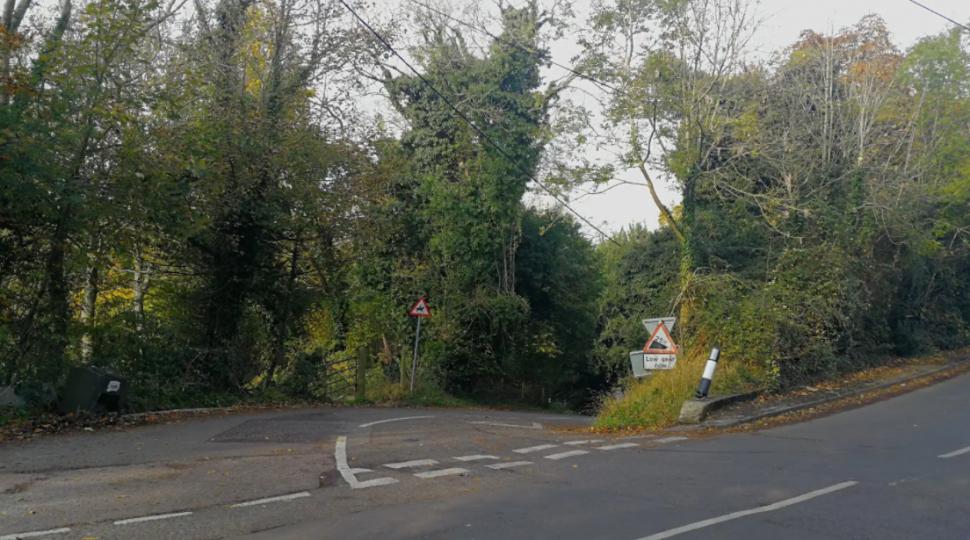
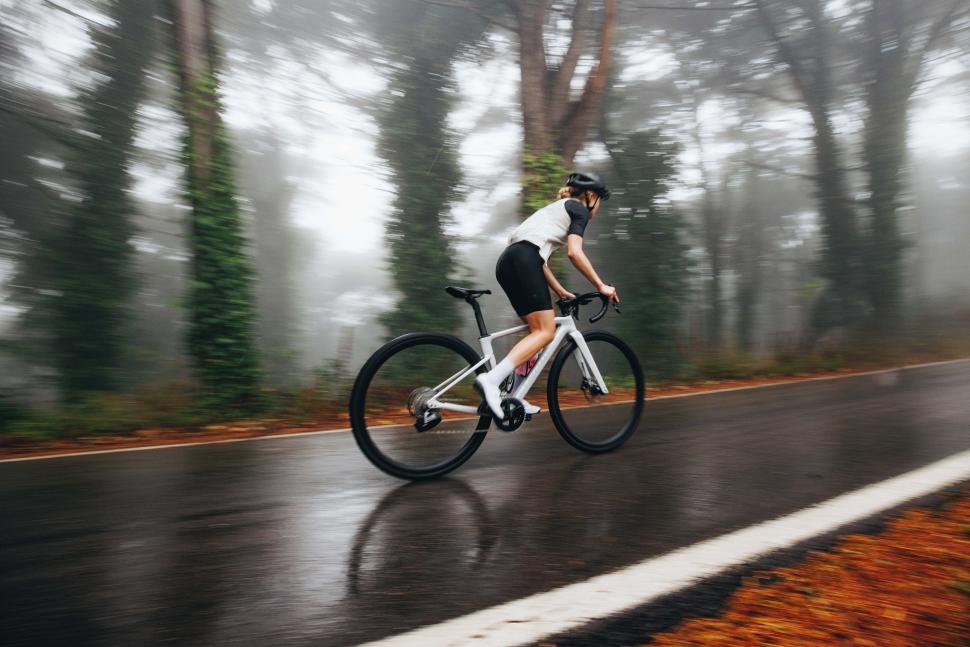

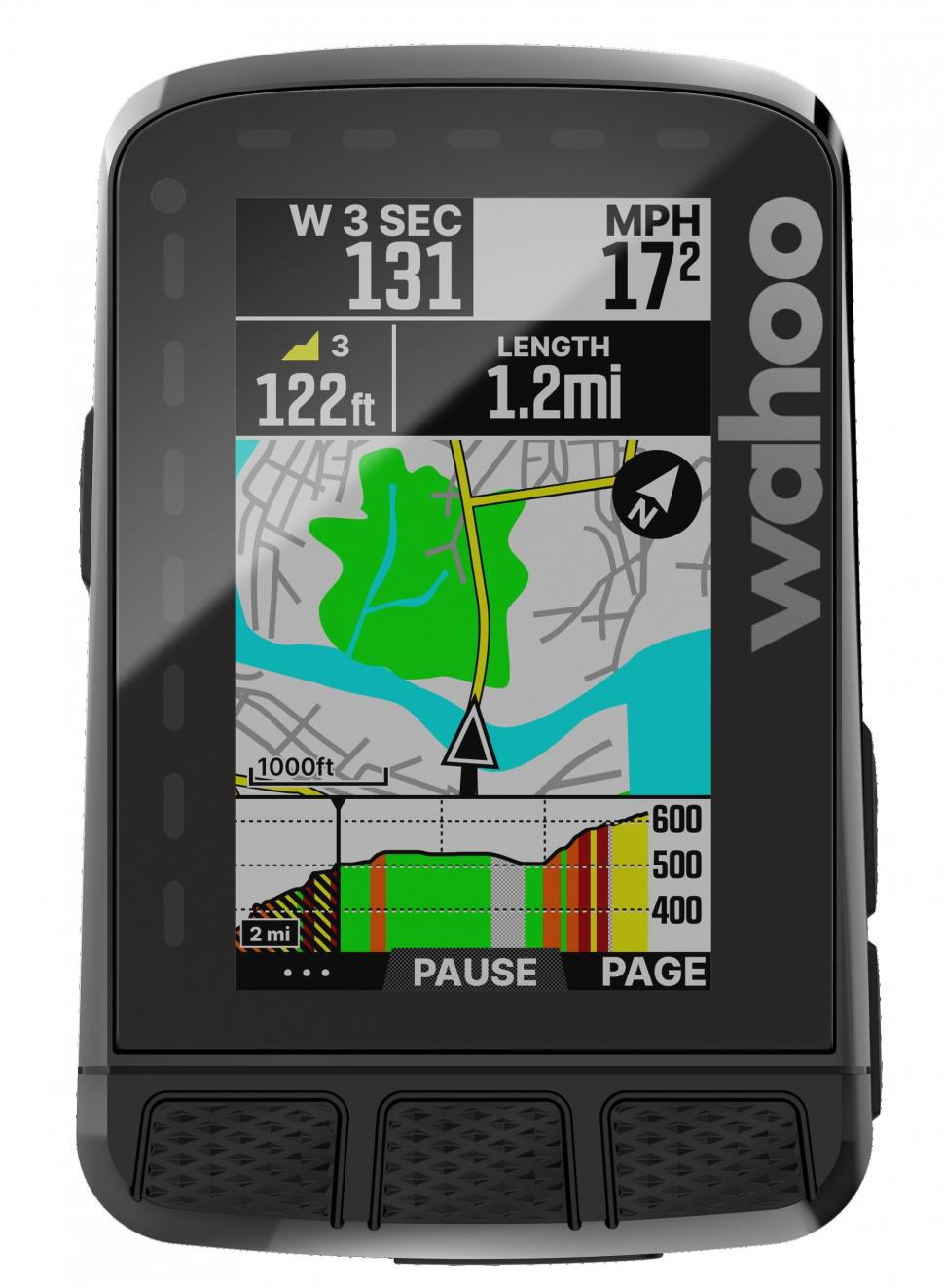
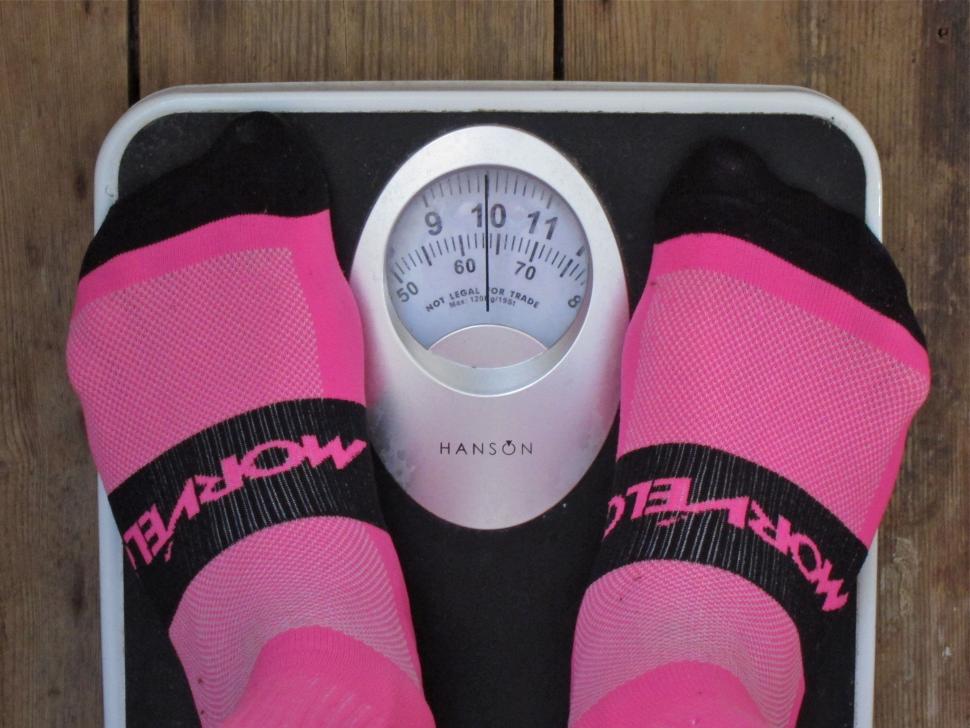
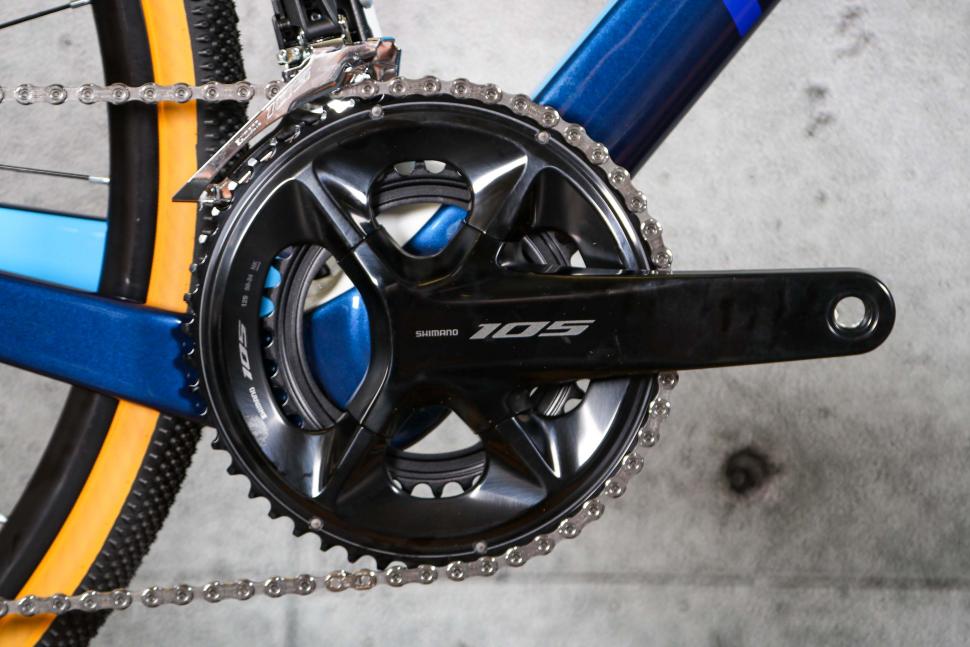
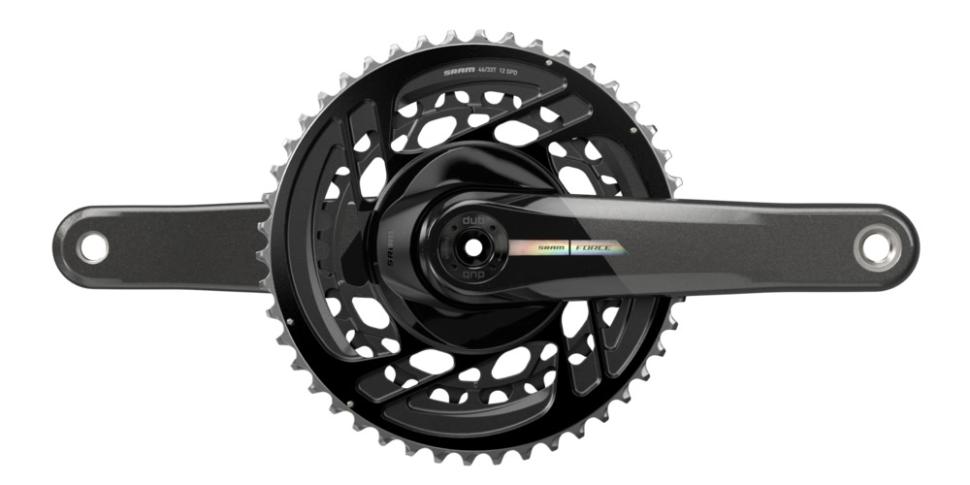

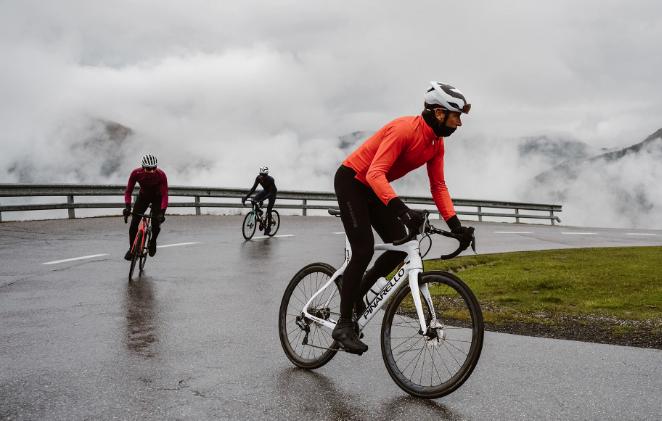
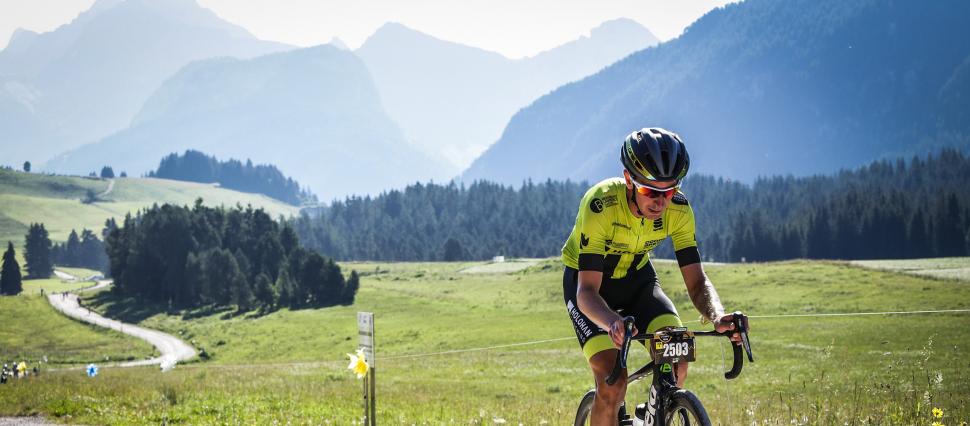

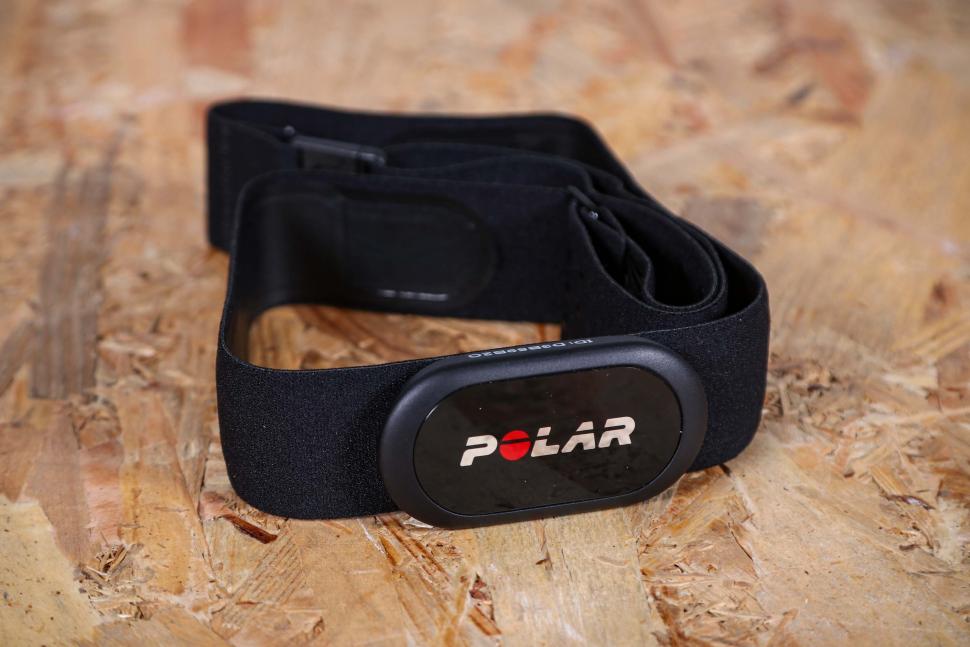
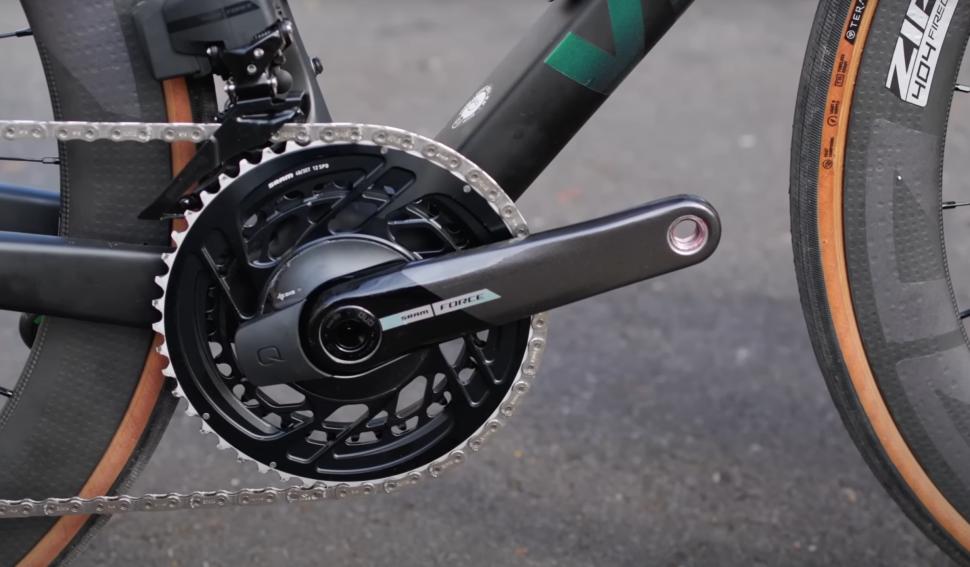

Add new comment
10 comments
Losing bodyweight to climb faster only works if you have weight to lose. (And having weight to lose is individual and not dependent on whether you look like Vingegaard or not.)
Underfueling means a person can't train as long or as intensely. It means they can't recover as well, are more prone to injury, and are more susceptible to hormonal problems such as low testosterone/estrogen. And there is still a total watts components on climbs, not just watt/kg.
I've been training for years, but recently went from a BMI of 18.5 to my current 20.4 and am climbing faster than ever because I have the energy to train longer and harder, I recover better, and have less systemic fatigue. PR dropped from 1 hr 15 min to 1 hr 8 min on my local 5.2% grade climb, good enough for a Strava QOM. Two course records last season on hillclimb races and 4 hillclimb overall female wins. Those extra 11 pounds are serving me well! (And some of it happens to be arm muscle, too, from generally being stronger.)
Any tips for rolling hills? Where I ride (mainly Cotswolds) there are a lot of roads that alternate between sections with mild gradients, and steep but short ups and downs.
I'm definitely not an expert, but have a few notes. I think it makes sense to try to hit the bottom of a dip as fast as you feel comfortable going, so your momentum will help you out on the way back up. But there are a few snags:
Know your road: the bottom of the dip can be a place where water washes over the tarmac in winter. That can make for a badly chewed up and pothole-riddled surface. You might feel safe gliding down smooth asphalt at 45mph, but are you and your tyres going to as comfortable if the road quality falls off suddenly at exactly the point where you hit max speed?
Beware wooded glades: the bottom of a hill sometimes is home to shady trees and a damper environment than the hilltop. From the end of March onwards, this can be a popular hangout for midges and other invisible insects, and you're liable to take a faceful. If you're not wearing eye protection, avoid going too fast into a leafy dell - and whether you are or not, keep your mouth shut.
Work the gears: this is the area where I definitely have a lot to learn. Normally, you won't have enough momentum to carry you all the way to the next crest (as there's a 50:50 chance it's higher, and you've lost energy to air drag as you were speeding along at the bottom). No matter how fit you are, you're going to lose speed and need to dump a lot of gears, while also trying to keep on putting as much leg power down as you can. Avoid being unrealistic about your ability to push through to the summit on a 54x11 ratio or else you can stall completely, but be quick about jumping up a few sprockets on the casette when you downshift the chainring, to keep things moving as slickly as possible.
Very keen to hear other people's advice on how to handle this common challenge on British roads.
"Beware wooded glades" sounds like a line from a Brothers Grimm story to me. Flying insects can be a nuisance and it's well worth wearing glasses anytime you're planning on cycling fast as it's no fun getting something in your eye. A handy tip if you want to breath through your mouth is to position the tip of your tongue at the top of your mouth so that any incoming insects hit your tongue rather than your throat - can prevent a coughing fit.
Why does an article about riding up hills, feature a picture of a road sign warning of a steep downhill as its "lead" picture?
The real secret to riding up hills is to only choose the hills that go downhill
Indeed, I generally find that when I'm struggling on a hill it's because I've got the bike back-to-front.
It's Ffordd Pen Llech, the second-steepest street on the planet according to the most recent hotly-disputed measurement. As you can ride up it (if you're much better than me at cycling) we've used our poetic licence here...
.
Another super article, Mat - many thanks.
.
Train on a heavy bike. When you switch to a lightweight one, you'll be flying.
Just get a lift to the top......then enjoy the descent......which is a test of skill, not fitness.